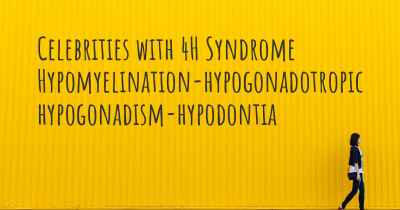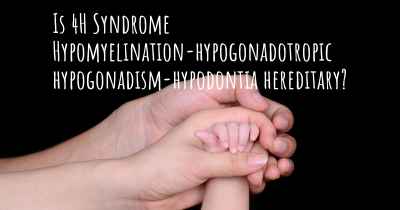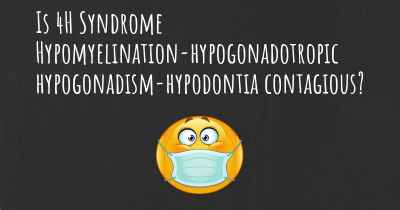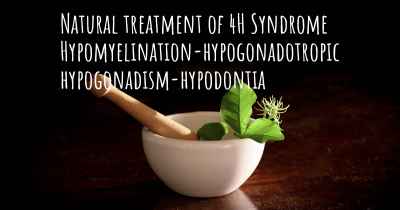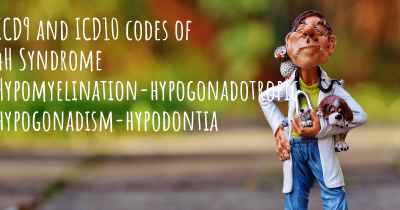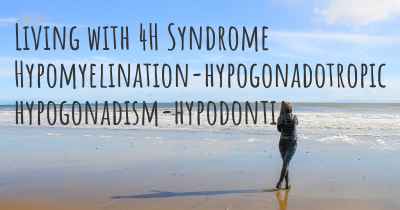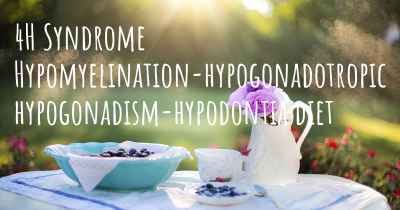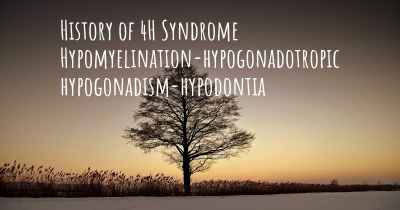What is the life expectancy of someone with 4H Syndrome Hypomyelination-hypogonadotropic hypogonadism-hypodontia?
Life expectancy of people with 4H Syndrome Hypomyelination-hypogonadotropic hypogonadism-hypodontia and recent progresses and researches in 4H Syndrome Hypomyelination-hypogonadotropic hypogonadism-hypodontia
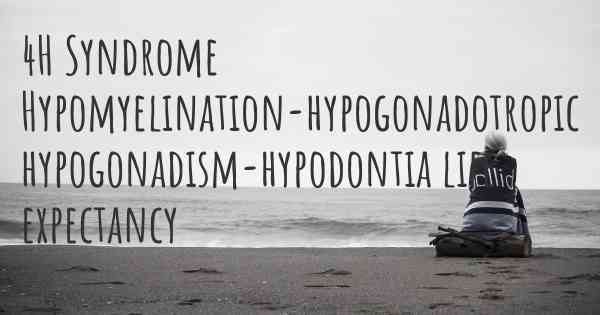
4H Syndrome Hypomyelination-hypogonadotropic hypogonadism-hypodontia is a rare genetic disorder characterized by a combination of neurological, endocrine, and dental abnormalities. The life expectancy of individuals with this syndrome can vary widely depending on the severity of symptoms and associated complications. As a complex condition, it is difficult to provide a specific life expectancy range. However, it is important to note that early diagnosis and appropriate management can significantly improve the quality of life for affected individuals. Regular medical follow-ups, supportive care, and addressing specific symptoms are crucial in enhancing longevity and overall well-being. It is recommended to consult with healthcare professionals for personalized information and guidance.
4H Syndrome Hypomyelination-hypogonadotropic hypogonadism-hypodontia:
4H Syndrome, also known as Hypomyelination-hypogonadotropic hypogonadism-hypodontia, is an extremely rare genetic disorder that affects multiple systems in the body. It is characterized by a combination of neurological, endocrine, and dental abnormalities. The syndrome was first described in 1993 and since then, only a few cases have been reported worldwide.
Neurological Manifestations:
One of the primary features of 4H Syndrome is hypomyelination, which refers to the underdevelopment or lack of myelin in the central nervous system. Myelin is a fatty substance that surrounds and insulates nerve fibers, allowing for efficient transmission of nerve impulses. The absence or reduced amount of myelin can lead to various neurological symptoms.
Individuals with 4H Syndrome often experience delayed motor development, muscle weakness, and coordination difficulties. They may have problems with balance and walking, and some may require assistive devices such as walkers or wheelchairs. Seizures can also occur in some cases.
Endocrine Abnormalities:
Hypogonadotropic hypogonadism is another key feature of 4H Syndrome. This condition is characterized by a deficiency in the production or release of hormones that stimulate the gonads (testes in males and ovaries in females). As a result, individuals with 4H Syndrome may have delayed or absent puberty, infertility, and low levels of sex hormones.
In addition to hypogonadism, some individuals with 4H Syndrome may also have growth hormone deficiency, leading to short stature. Regular monitoring and appropriate hormone replacement therapy can help manage these endocrine abnormalities.
Dental Anomalies:
Hypodontia, the absence of one or more teeth, is a common dental abnormality seen in individuals with 4H Syndrome. The missing teeth can vary in number and location, affecting both primary and permanent dentition. Dental management, including orthodontic treatment and prosthetic solutions, may be necessary to address the functional and aesthetic aspects of hypodontia.
Life Expectancy:
Given the rarity of 4H Syndrome and the limited number of reported cases, it is challenging to provide a precise life expectancy for individuals with this condition. The severity and progression of symptoms can vary significantly between affected individuals, making it difficult to generalize.
However, it is important to note that 4H Syndrome is a progressive disorder, meaning that symptoms tend to worsen over time. Neurological deterioration can lead to increased disability and reduced quality of life. Additionally, individuals with severe hypogonadotropic hypogonadism may face challenges related to fertility and hormonal imbalances.
Despite these challenges, advancements in medical care and supportive therapies have improved the management of symptoms and overall well-being of individuals with rare genetic disorders. Early intervention, multidisciplinary care, and regular monitoring can help optimize outcomes and enhance the quality of life for those affected by 4H Syndrome.
In conclusion, 4H Syndrome is a complex genetic disorder characterized by hypomyelination, hypogonadotropic hypogonadism, and hypodontia. While it is difficult to determine an exact life expectancy for individuals with this syndrome, it is crucial to provide comprehensive medical care and support to manage symptoms and improve their overall quality of life.
Posted Oct 17, 2021 by Effectivespell
